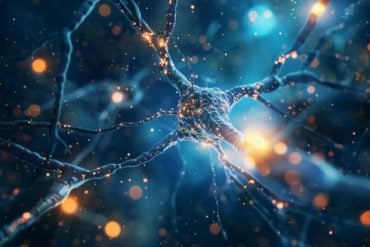Summary: A new study reveals that the brain’s cortex can self-organize during development, transforming unorganized inputs into highly structured activity patterns. This self-organization is guided by mathematical rules similar to those found in other natural systems. Disruptions in these patterns could impact sensory perception and contribute to neurodevelopmental disorders like autism.
Key Facts:
- The cortex can self-organize neural activity during development.
- This self-organization is guided by mathematical rules found in nature.
- Disruptions in these patterns may contribute to neurodevelopmental disorders.
Source: University of Minnesota
Published in Nature Communications, an international collaboration between researchers at the University of Minnesota and the Frankfurt Institute for Advanced Studies investigated how highly organized patterns of neural activity emerge during development.
They found the cortex of the brain can transform unorganized inputs into highly organized patterns of activity — demonstrating self-organization.
“What makes this transformation so important is that it appears to occur entirely within the cortex itself, indicating that the brain is able to organize its own function during development,” said Gordon Smith, PhD, an assistant professor at the U of M Medical School.

“This suggests that any perturbations to these small-scale interactions can dramatically change the function of the brain, which may impact sensory perception and possibly contribute to neurodevelopmental disorders like autism.”
In a self-organizing system, small-scale interactions combine to generate large-scale organization. By closely combining theory and experiment, the research team was able to show that mathematical rules similar to those found to govern the patterns in a broad range of living and non-living systems, such as the spots on certain fish and the spacing of sand dunes, also guide the development of the brain.
“Our results suggest that neural activity patterns in the early cortex arise dynamically through feedback loops that involve a balance between local activation and lateral suppression, confirming a theoretical hypothesis of brain development dating back decades,” said Matthias Kaschube, PhD, professor at the Frankfurt Institute for Advanced Studies and co-investigator of the study.
The research team used optical tools recently developed at the U of M to directly demonstrate how the large-scale structure of developing brain networks emerges from the networks themselves, rather than being imprinted from an external source.
“By utilizing cutting-edge optical techniques, these experiments allowed us to test a long-held scientific theory and show that the brain organizes its own activity during early development,” said Dr. Smith, who is also a member of the Medical Discovery Team on Optical Imaging and Brain Science.
Ongoing research is exploring how alterations in these self-organized neural activity patterns early in development impact sensory perception later in development.
Funding: Funding was provided by the National Eye Institute [grant R01EY030893-01], Whitehall Foundation [2018-05-57], National Science Foundation [IIS-2011542], and the Federal Ministry of Education and Research [BMBF 01GQ2002].
About this neurodevelopment research news
Author: Alexandra Smith
Source: University of Minnesota
Contact: Alexandra Smith – University of Minnesota
Image: The image is credited to Neuroscience News
Original Research: Open access.
“Self-organization of modular activity in immature cortical networks” by Gordon Smith et al. Nature Communications
Abstract
Self-organization of modular activity in immature cortical networks
During development, cortical activity is organized into distributed modular patterns that are a precursor of the mature columnar functional architecture.
Theoretically, such structured neural activity can emerge dynamically from local synaptic interactions through a recurrent network with effective local excitation with lateral inhibition (LE/LI) connectivity.
Utilizing simultaneous widefield calcium imaging and optogenetics in juvenile ferret cortex prior to eye opening, we directly test several critical predictions of an LE/LI mechanism. We show that cortical networks transform uniform stimulations into diverse modular patterns exhibiting a characteristic spatial wavelength.
Moreover, patterned optogenetic stimulation matching this wavelength selectively biases evoked activity patterns, while stimulation with varying wavelengths transforms activity towards this characteristic wavelength, revealing a dynamic compromise between input drive and the network’s intrinsic tendency to organize activity.
Furthermore, the structure of early spontaneous cortical activity – which is reflected in the developing representations of visual orientation – strongly overlaps that of uniform opto-evoked activity, suggesting a common underlying mechanism as a basis for the formation of orderly columnar maps underlying sensory representations in the brain.






